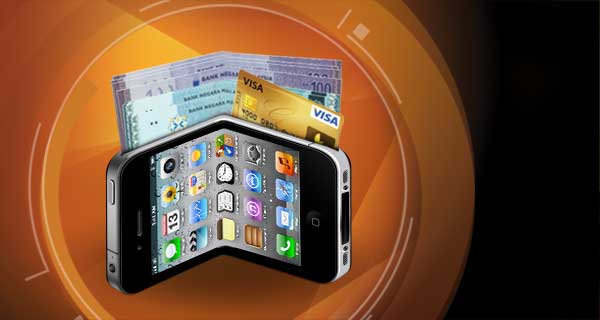
In the last 10 to 15 years mobile phones have gone from communications devices intended mainly for business people to devices used by almost everyone. Today it is estimated that over 70% of the world’s population uses mobile phones.
Today, thanks to the phenomenon of smart phones and great application market, mobile phones are increasingly being used for different situations and activities. Thus in many ways they are also present in the purchasing process.
Buying process
Smart phones & tablets users could complete all shopping and purchase process from planning to store selection, product selection, payment, product use and evaluation experience and product satisfaction on their smart phones or tablets. Mobile purchasing have evolutionary changed the old-fashioned way of purchasing and making payment.
On the spot
Some retailers through their mobile apps offer help in navigating through the store making it easier to find the required products on the shelves.
Along with purchasing products at the store, products can also be purchased online, in a similar way to using a computer. The only difference is that to make an internet purchase through mobile phones countless mobile applications can also be used.
Paying with EMV
International credit card organization has gotten the banks to commit to introducing a chip bank card payment application according to the EMV specifications i.e. switching from conventional magnetic technology to chip cards. The need for business security has indisputably accelerated their implementation.
ATMs and EFTPOS terminals connect to the LAN network of banks and retail stores or use the GPRS mobile network operators in the VPN structure. DSL is expanding in flats, shops and neighborhoods and the terminals for payment cards appear, which are like Internet terminals in constant communication, and become faster in making transactions through the authorization centers for payment cards. But these Point of Sales credit card systems include heavy bank handling fee.
Internet and mobile telephony are expanding globally across all social strata. The impact of these developments in telecommunications are tangible and in infrastructures for operations with a debit cards and credit cards.
Mobile Payment Acceptance is the ability to accept payments on a mobile device, whether it is a smart phone or tablet. The usual set-up includes a free or low cost attachment device that allows for the swiping or reading EMV IC on the credit and debit cards. The device is connected, through the smart phone or tablet to a credit card processing application.
The benefits for business
There are many benefits of having a mobile payment system set up such as:
• The ability to make faster purchases
• Ability to accept payment away from home base
• Set-up can be (depending on the platform) quick and simple
Mobile phone as a wallet
Apart from mobile payments that are similar to online purchases via the computer, in recent times more and more is being said and written about Near Field Communication (NFC) technology, which will allow the use of mobile phones as a wallet or a credit card.
Applying NFC is not exclusive to mobile payments, although this is what is expected in the future. Other possible uses of this application are on public transport, identification purposes when entering facilities, etc.
A matter of time
The latest analysis reports on Thanksgiving 2012, eBay saw a 133% increase in mobile volume transacted compared to Thanksgiving 2011. On the other hand, Paypal said that Thanksgiving 2012 resulted in more than 173% increase in global mobile payment volume compared to previous years.
PayPal predicts that we will no longer use wallets to pay, but we will pay with our smart phones and tablets by 2015. It’s just a matter of time.





